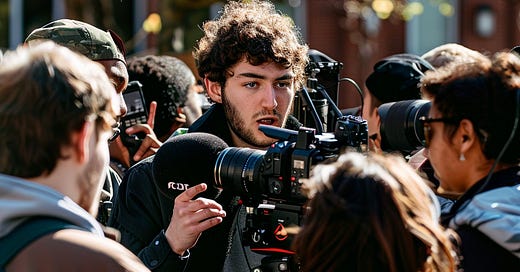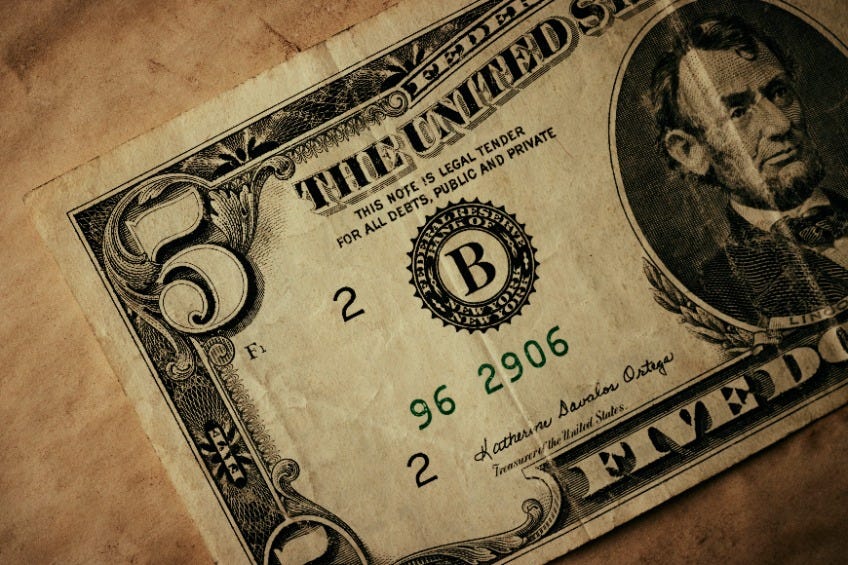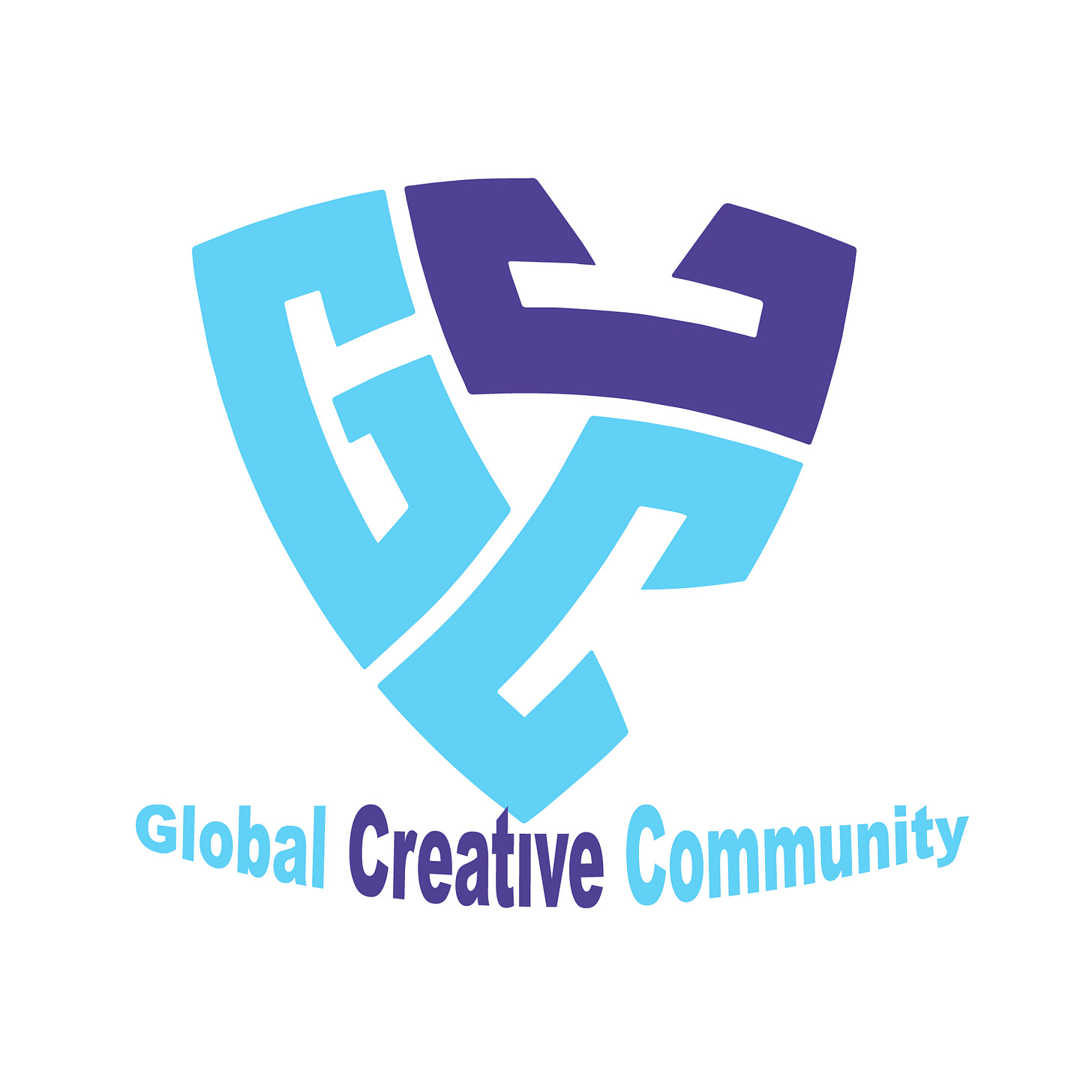Stifling the media - especially student media - is the worst way to handle campus protests
Issue #597 The Choice, Thursday, May 9, 2024
Please share and subscribe.
Also, please scroll to the end of this post for other ways to financially support us and We Are Speaking with our books and courses.
We appreciate your support!

So why aren’t we hearing more from the students themselves?
A large part of this very big story about college students protesting the role their universities and their government is playing in the oppression of the Palestinian people in Gaza has been shaped, molded and disseminated to the rest of the country by everyone except those who began the protests to begin with. And so we too often heard pearl-clutching reports about the horrors of radicalized out-of-control young people disturbing classes, taking over school buildings, and refusing to leave their tent cities (until the police are called in to tear gas them, arrest them, and drag them away).
So you may or may not remember how, during the Vietnam War, journalists were pretty much allowed to be journalists and therefore covered that conflict from a wide variety of angles, exposing a lot of stuff that the high-ranked military officials and elected government leaders would have much preferred we regular citizens never knew about. From PBS:
The conflict in Vietnam became known as America’s first “television war.” From eight thousand miles away in the jungles of South Vietnam, journalists would shoot their films, file their reports, and have them published or broadcast on the next day’s news. All this was presented to the American public in living color.
For the most part, Vietnam War journalists had access to ground soldiers, high-ranking officers, and battlefields. Journalists dug deep into military records and interviewed a broad range of personnel. Vietnam’s history, its culture, and its politics made this war different than any other Americans had fought.
Since that time, the American news media has never again been allowed that level of access and unfettered reporting. And right now, in Gaza, all foreign journalists are banned. The few native Palestinian journalists trying to get the stories out are virtual target practice for the pro-Israeli forces.
That same stifling of media coverage, in a blatant attempt to control the story rather than let the full and truthful story be told, is what we see happening right now. Thankfully the situation on college campuses is not as deadly - although still quite dangerous. From WDSU News in New Orleans:
At Columbia University in New York, journalists said they were barred from covering the unrest Tuesday night as police officers in riot gear breached an academic building where demonstrators were barricaded, resulting in more than 100 arrests. At the University of California, Los Angeles, student journalists reporting on violent clashes between protesters said they were assaulted and gassed. And in Northern California, local journalists covering college demonstrations were detained and arrested by police.
On some college campuses rocked by the demonstrations, access has been restricted to students only, effectively making student journalists the only reliable news media reporting on the campus protests and clashes.
At UCLA, reporters for the student-run newspaper The Daily Bruin, said they were violently attacked during the clashes Tuesday night, including being followed, slapped and sprayed with irritants, the newspaper said. Student Editor Dai-Liu told CNN that she was gassed, and other student reporters were assaulted, with one reporter being taken to emergency care.
And then from CNN:
Journalists tasked with covering violent unrest on college campuses across the US have been arrested and barred access as police moved in to crack down on pro-Palestinian protesters who have set up encampments and barricaded themselves inside buildings.
The confrontations with journalists come as student-run news outlets and traditional news media descend on college campuses where police officers have clashed with and arrested hundreds of demonstrators demanding the universities divest any financial ties with Israel over the war in Gaza. On one campus, assailants reportedly followed and attacked student journalists.
At Columbia University in New York, journalists said they were barred from covering the unrest Tuesday night as police officers in riot gear breached an academic building where demonstrators were barricaded, resulting in more than 100 arrests. At the University of California, Los Angeles, student journalists reporting on violent clashes between protesters said they were assaulted and gassed. And in Northern California, local journalists covering college demonstrations were detained and arrested by police.
Perhaps one of the best stories I have read thus far that demonstrates the importance and effectiveness of student journalism - and what they have been up against trying to cover these protests - was reported recently by AP.
At campuses across the country, around-the-clock reporting from protests and student disciplinary hearings have meant overnight vigils at encampments blurring into morning classes, homework and final projects crammed in between interviews.
Student-run news websites at Yale and the University of Texas-Austin cover the action with innovative live blogs. The Daily Trojan’s print editions have stopped for the semester at the University of Southern California, but Editor-in-Chief Anjali Patel tries to keep a reporter and photographer available at all hours to feed its website, post news on X and Instagram and do live streams. All during final exam season.
Another great piece was done by public radio (NPR, PBS, Connecticut Public) when they interviewed some of the students to let them speak for themselves and tell their own stories in their own words.
As I said last week, we need to be listening to these students. Not attacking them with the police.
Our paid subscribers are encouraged to comment on this post.
Let’s discuss these facts in our community on Substack Notes. You can also read other Substack publications without subscribing to them when you join Notes.
This post is free to read for three days. To have access 365/24/7 to our full archive, comment on our posts, and financially support “We Are Speaking” for no more than $5 per month, please subscribe at the paid level. You will receive a 7-day FREE trial!
This post is free to read for three days. To have access 365/24/7 to our full archive, comment on our posts, and financially support “We Are Speaking” for no more than $5 per month, please subscribe at the paid level. You will receive a 7-day FREE trial!
Independent Authors and Creative Professionals: Branding and Marketing Courses and Networking Groups are available in the GCC Branding and Marketing Academy!
Pam’s Business Books and Keith’s SciFi Books are available to purchase here!





